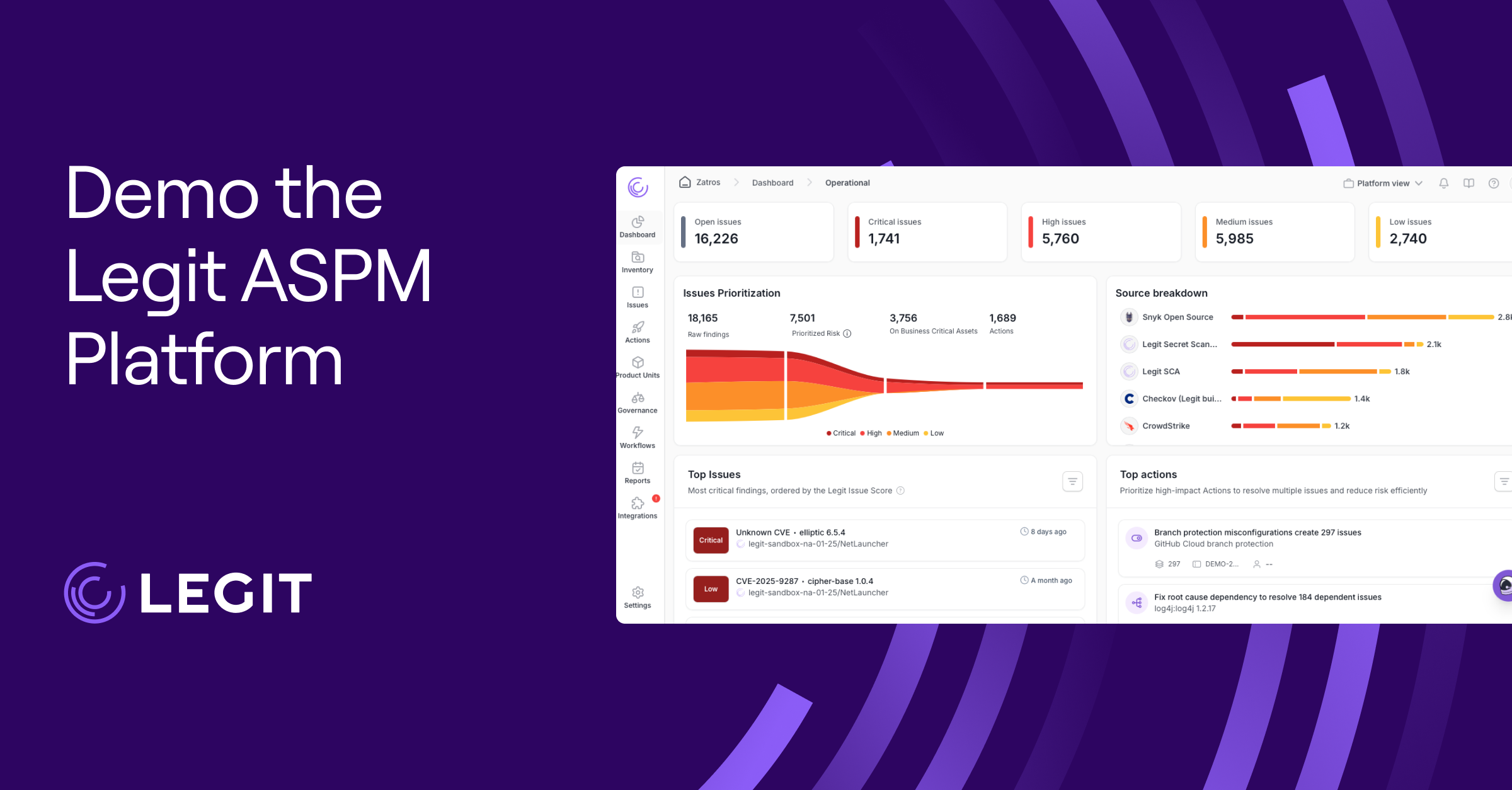If you haven’t already been integrating security into DevOps, we've provided this 4-step guide to help smooth the transition as well as describe the important benefits of "DevSecOps" or taking a security-oriented approach to DevOps.
How You Can Benefit from a DevSecOps Approach
DevOps
DevOps is the combination of philosophies, practices, and tools that helps businesses deliver apps and services at increased efficiency. DevOps has become a popular approach to development, but there has been lag in incorporating more comprehensive security into the mix.
For example, a recent SecOps study actually found that 68 percent of responding CEOs stated that security and operations teams should not do anything to slow down business. This is unfortunate, because in reality we have found that adopting a security mindset throughout the DevOps process can actually free up more time when properly integrated across cross-functional teams. The development time actually decreases and the quality of the finished product/service remains consistent - if not better - thanks to a cross-functional DevSecOps approach.
DevSecOps
DevSecOps is closely related to DevOps, but it adds a critical security-oriented approach to every step of the development process. While this may seem like it might be more time and cost-intensive to integrate security at every step of the development process, the opposite is true when done right.
The benefits of integrating security into DevOps is becomes more widely recognized by application security teams, but protecting software pipelines requires collaboration and security at each stage of application development.
The benefits of adopting a DevSecOps approach can include:
- Improved cost efficiency
- Improved on-time delivery rate
- Supports greater openness and transparency throughout each phase of development
- Lower response time and easier recovery in the case of a breach or security incident
- Greater ability to accurately measure security statistics
- Hardened overall security thanks to immutable infrastructure that further incorporates security automation
4-Steps to Integrating Security into DevOps
Securing DevOps doesn’t need to be difficult. To implement DevSecOps, the most challenging part can actually be the cultural and mindset shift that is required to do so. Securing DevOps is done by embedding security best practices into the development process. This can be done in four steps: (1) initiating culture change, (2) deploying automation, (3) implementing protocols, and (4) implementing continuous improvement. Let’s dive into each step for securing DevOps.
Step 1: Initiate Culture Change from the Top Down
Getting teams to adopt a “security-first” approach is easiest to do when it’s demonstrated throughout the organization. A security-first approach hasn’t been the traditional way of life for most organizations, but the importance of secure software has grown much more significant in recent years.
No DevSecOps approach can be successful if the organizational change isn’t driven from the top down. While it is not uncommon for many development teams to resist this change of perspective, development and security leaders can spearhead a new approach by adopting a security-inclusive mentality.
There are a few ways leadership can drive change from the top down including:
- Highlight headlines where a DevSecOps approach could have prevented a security incident
- Demonstrate a willingness to dedicate time and resources to DevSecOps initiatives
- Allow teams to take extra time to address security concerns, even if it initially means delays
Implementation starts by taking the initiative. Process and tool automation can quickly follow and help minimize barriers to security in the DevOps security model once organizations begin their journey.
Step 2: Employ Automation Whenever Possible
Successfully implementing DevSecOps means learning how to take advantage of automation and implementing automated security measures whenever possible. Security incidents often happen because of oversight or human error, and it’s unrealistic to expect every bit of code, system configuration, and pipeline process based on human decision-making to be perfect. That’s where automation comes in.
Automation is one of the most powerful attributes of DevSecOps security tools and automation provides numerous benefits. These types of tools function as an important extension of the security team and DevOps. They can help implement change quickly and identify high-severity or unknown vulnerabilities – all without sacrificing additional developer or security team hours. Some of the functions that automated tools offer to teams include pipeline vulnerability scanning, SAST, open source library scanning, and more.
Security automation can be implemented during each stage of DevOps and the development pipeline. Parts of the development process where security automation can be deployed include:
- Coding
- Ensure common security requirements for encryption and authentication
- Reviewing
- Automated checks are used to review code as part of regular agile sprints
- Automation can help make sure that software meets appropriate standards
- Testing
- Automated code scanning with SAST and SCA, since no human can parse through code that fast
- Automated security tests are run alongside automated functional and performance tests
- Automated penetration tests look for security cracks in systems as part of every sprint and release cycle.
- Deployment
- IaC automated scripts to deploy software are CLI commands that are packaged to deploy software to avoid human error
- Automated cloud scripts help deploy containers to the cloud or automate deployment of a virtual machine
- Automated processes are used to deploy code securely and reliably into production-hosting environments that can be rapidly invoked through APIs
- Operations
- Automated scanning of log files in real-time for anomaly detection and alerting
- Automated processes such as real-time monitoring, intrusion detection, and compliance validation are used to detect vulnerabilities (product reliability and security are constantly checked to detect vulnerabilities and prioritize resolutions)
Integrating security into the DevSecOps toolchain can be done with continuous security testing, cloud security, and process automation. While this may seem complicated for those taking their first steps, exponentially better organizational efficiencies are quickly realized.
Step 3: Keep Security Practices Simple, but Strict
The most effective security practices are simple but can become complicated if organizations are not vigilant about enforcing them while following DevOps security best practices. Clear, simple, straightforward protocols are easy to implement and easy to understand. Complicated or overly arduous security protocols do not encourage a security-first mindset because they can create unreasonable obstacles for developers. Plus, teams are not likely to remember every detail in complex, pages-long security protocols.
Protocols that might be included in an organization’s security policy include:
- Authentication, permissions, regulations, and monitoring
- Defined minimal levels of security for all projects
- Encryption keys
- Ciphers
- Password complexity
- Written Information Security Program (WISP)
Since most developers are not trained in best practices for securing code and do not consistently have security embedded into their design process, security training becomes that much more important. In-house training with a focus on an ownership philosophy where ‘if you code it, you own it’, helps DevOps grow into a security-first mindset and DevSecOps.
Security implementation can be done to keep things simple and efficient. In order to keep efficiencies high, teams need to be regularly trained and processes need to be continuously improved upon.
Step 4: Approach Secure Development as a Continuous Improvement Process
DevSecOps, just like DevOps, is a continuous improvement approach for the software development lifecycle. One of the easiest ways to expose your product or services to a security incident is by simply releasing and then resting on your laurels. Hackers and other malicious players are constantly evolving and looking for ways to initiate the next breach. One simple way to avoid this fate is by approaching software development as a continuous integration and security improvement process. Even after one cycle ends, it’s essential to monitor, revise, redeploy, or even recall when there’s a serious risk of a security incident. Create a feedback loop for maximum efficiency.
"DevOps [is] all about empowering teams—enabling organizations to work collaboratively to develop and deliver secure software faster and more efficiently... it’s all about agility, and being able to learn and deploy fast. All of that leads to continuous, iterative improvements and feature deployment.” - GitLab
Streamline the Development Process with a DevSecOps Approach
There are many benefits to adopting a DevSecOps approach and initiating a culture change helps integrate security into DevOps from the top down. Leadership is essential to start the journey of implementing DevSecOps. Deploying tools for security automation, where possible, is essential for a more robust security posture. While security protocols can be complex, the most effective ones are simple. When organizations follow security protocols closely and provide necessary training, it can lead to a more seamless implementation. Ultimately, practicing DevSecOps improves your ability to rapidly release secure software.
While following all of these DevOps security best practices may sound daunting, it’s perfectly achievable by following these four steps – leadership initiation, deploy automation, implementation of security protocols, and continuous process improvement.
Leadership starts within your organization and your team, but automation is made easy with the right tools. Legit Security helps accelerate DevSecOps by protecting your software supply chains from attack including the CI/CD pipelines, SDLC systems and infrastructure, and the code and teams that operate within it.
Download our new whitepaper.


